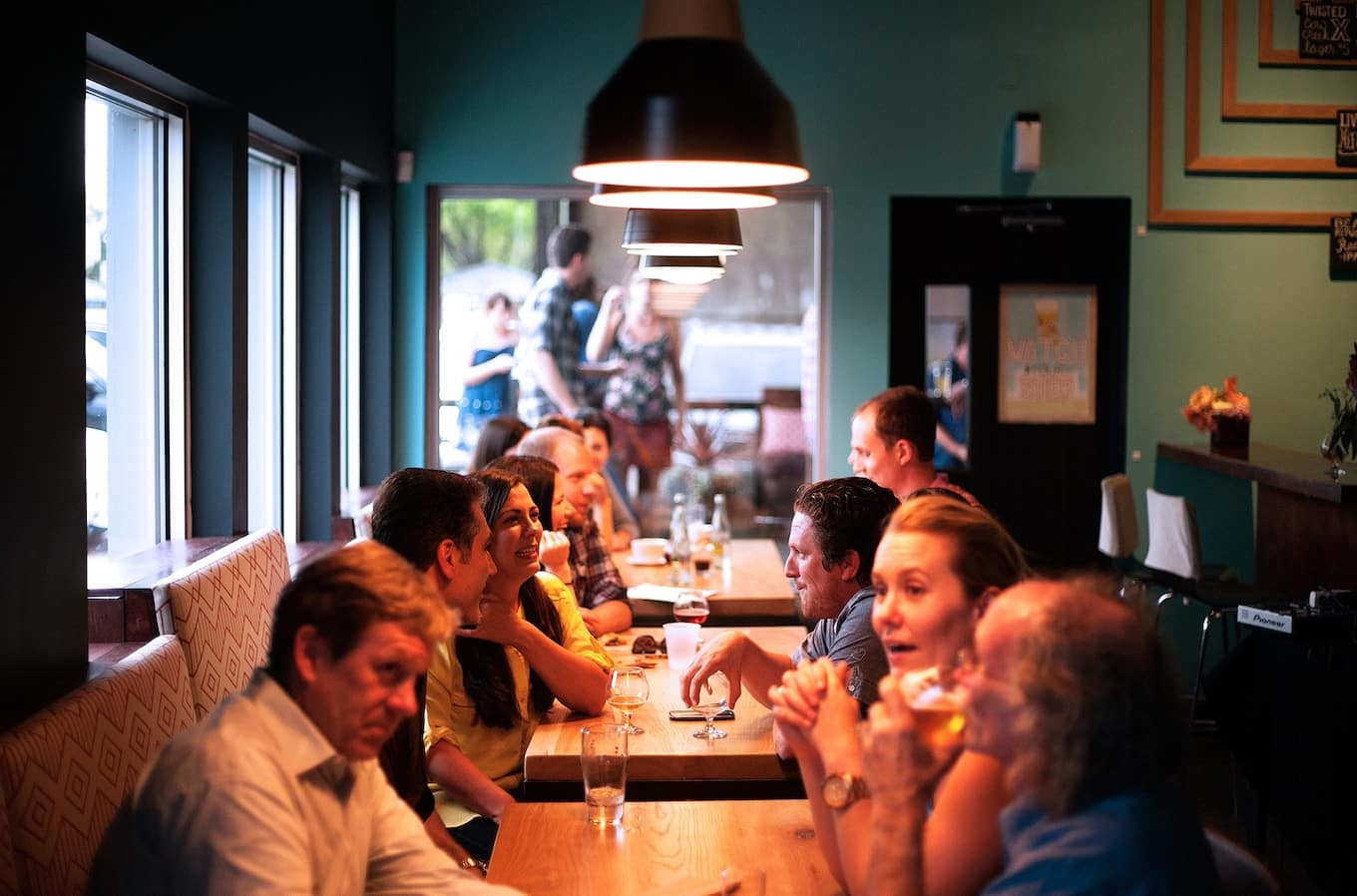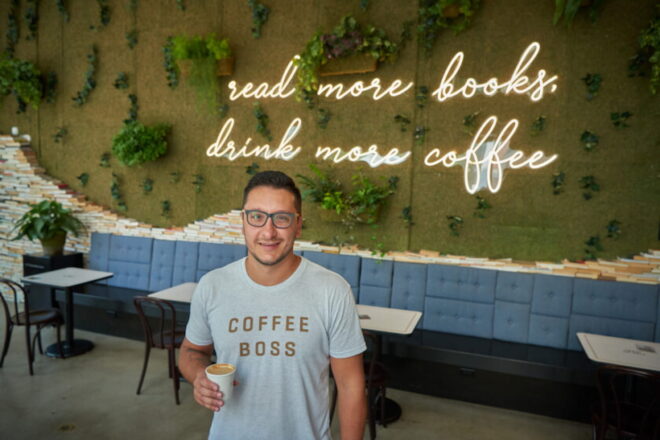Win the waiting game: How to keep customers from leaving when tables are full – Part 2
Editorial Team
6 min read
In Part 1 of this article, we covered some of the basics of connecting with customers when asking them to wait before service. Today we continue with more solutions to keep your customers happy and loyal.
Leave yourself room to avoid over-promising and under-delivering.
“I always say quote a time range,” says leading hospitality expert Beatrice Stein. “When you give a range for how long you expect a table to be ready, you give yourself flexibility.”
And from experience, Stein has observed that “30 minutes is typically the point where people start to decide whether the wait is too long or not.”
When a customer elects to hang in there for 30 minutes or longer, you really have to honor that leap of faith by committing to continued attention and communication. (A challenge that can fortunately be supported by automated technology these days. More on that further down in this piece.)
To comp or not to comp.
In Stein’s experience with comping, there is no prevailing standard. “Every restaurant does whatever they want.” The only time she thinks it’s absolutely necessary is when a restaurant has clearly missed their mark.
“If you’re running late on a reservation, after fifteen minutes you should be buying them either a drink or sending out something to snack on,” she insists. Given that the customer was offered and confirmed a set time, that’s a clear case of “not following through on your end of the bargain.”
“But with the walk-in-and-quote situation, unless you’re really off your quote, you don’t need to buy anything,” she adds. “That said, if you quoted twenty minutes and now it’s been thirty, you need to buy them something.”
Douglas Robert Brown, author of the seminal and enduring industry best-seller The Restaurant Manager’s Handbook, recognizes that there’s a trend away from comping these days, but finds that policy shortsighted in terms of building customer loyalty. Especially when you’re asking guests to wait.
A specific tactic he recommends is to print branded “dessert vouchers” for managers and/or hosts to give guests. “You can say to the customer, ‘I’m sorry about the wait. It’ll be worth it. And here’s a voucher for complimentary dessert after your meal.’” This approach incentivizes the customer to stay while consuming no time in the moment since nothing has to be prepared and served until later.
Overall, the critical calculation for comping is all about “perceived value versus actual value.”
For example, with many restaurants charging over $10 for a glass of house wine, the perceived value to the customer of a complimentary chardonnay is high, “but what does that glass of wine actually cost the restaurant? Very little.”
And the return in goodwill and customer loyalty will almost invariably be much higher.
Take reservations—and learn from them.
Understand the demand. “Taking reservations is critical to understanding the flow of customers,” Brown insists. “Use a good reservation software application, one that can help you manage the restaurant, where the app shows all the tables and chairs, numbered.”
Clover Dining will cover those bases and then some, including the ability to customize floor plans and create visual table layouts on your screen. By facilitating better communication between your front- and back-of-house, the app also supports orders get fired faster, which will streamline your food service and boost your turn-over rate.
Once walk-in guests have decided to stay despite a delay, the challenge becomes about managing the expectations of your entire waitlist. Time is money on both ends. For your customers’ satisfaction as well as general efficiency, it is critically important to stay seamlessly connected.
Tap technology for managing your waitlist.
Waitlist Me is an easy-to-use waitlist management application for restaurants and other businesses that uses text and phone call notifications to alert customers when it is their turn.
And Beatrice Stein feels strongly that today’s customer prefers being contacted through their phone rather than handheld buzzer devices.
“The phone or text message is more personalized than some beeper you have to hold.” Even better, the Waitlist Me integration for Clover is free and can be used on multiple Clover devices — as well as on iPads, iPhones, Android tablets and phones, and computer browsers.
Another popular, comparable solution Clover offers is Clavo Waitlist. With this Clavo app, you can enter your customer’s information and assign a predefined wait time, setup their mobile number for SMS notification, display a list of all customers along with their current wait time, customize the notifications, and more. You can also integrate Clavo Waitlist with Clavo Tables for a powerful combination of table and waitlist management.
For additional supportive resources, Clover Dining facilitates easy pre-authorizations, so customers can order some drinks and or snacks while they wait to be seated, then transfer the tab seamlessly to their table once it’s ready. It also facilitates seating parties at tables and communications between front- and back-of-house, which means orders get fired faster, streamlining food service generally.
After all, as Douglas Robert Brown emphasizes, “I think the best thing a restaurant can do is try not to get into that situation in the first place.”
Find the inefficiencies slowing down successful experiences and profitable progress.
To that critical end, here’s a primary checklist:
- Are you properly staffed for busier periods? (Are you properly staffed period?) You’re not saving money having fewer people on the floor and/or in the kitchen if it means you’re leaving money on the table in the form of lost seatings. 7shifts is a powerful platform for restaurant owners and managers to schedule staff that integrates with your Clover POS to build more successful staff schedules and higher table turns.
- Have you provided your staff with sufficient training? Well-organized, ego-free teamwork is the key to grace and speed under high-traffic pressure. Training also builds the sort of confidence that customers can sense and appreciate.
- Are checks being dropped fast enough and credit-debit picked up fast enough? Clover Flex is a powerfully agile mobile asset for accelerating service while maintaining accuracy, making tableside ordering and payment nearly effortless.
Then there’s a logistic low-hanging fruit that Douglas Robert Brown says a lot of restaurants are missing. In the years when he was an active consultant, he often advised clients considering complicated solutions for boosting their capacity to “really look at the layout of the restaurant first. Is there a better way to use the space?”
For one example, a country club that sought Brown’s opinion on an expensive dining room expansion was, he noticed, using exceptionally large chairs. Simply by adjusting the floor’s layout around smaller chairs, he was able to add 65 seats “without weeks of renovation costing hundreds of thousands of dollars.”
Once again, popular demand is great. Letting it come between a customer’s positive experience and your bottom line is not.
Winning the Waiting Game 6-step strategy recap:
- Take time to connect, communicate, and always give options.
- Quote a time range.
- Comp to reward patience.
- Take reservations and learn from them.
- Leverage smart tech for better a better waiting experience.
- Identify and address the inefficiencies slowing your service down.
Related Posts
Winfield Street Coffee
Need cash quickly? Try Clover Rapid Deposit
Popular Topics
Stay In Touch
Sign up and learn more about Clover.
Thank you for your subscription!
Recent Stories
- Jewelry store supplies and equipment needed for opening day
- How small businesses can use employee discounts to retain staff
- Tips and tricks for opening an outdoor pop-up restaurant
Please share your contact information
to access our premium content.
Thank you for sharing your contact information.
Download Now





